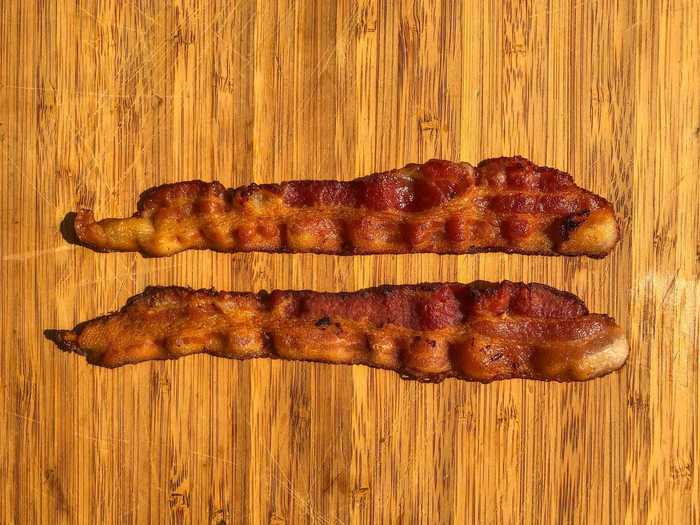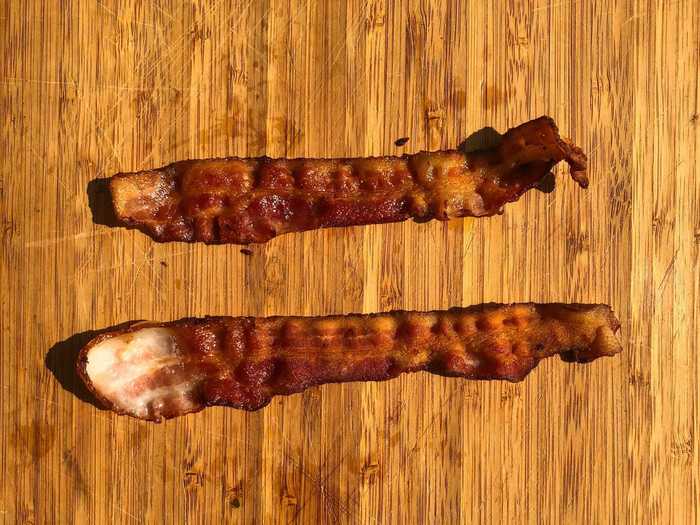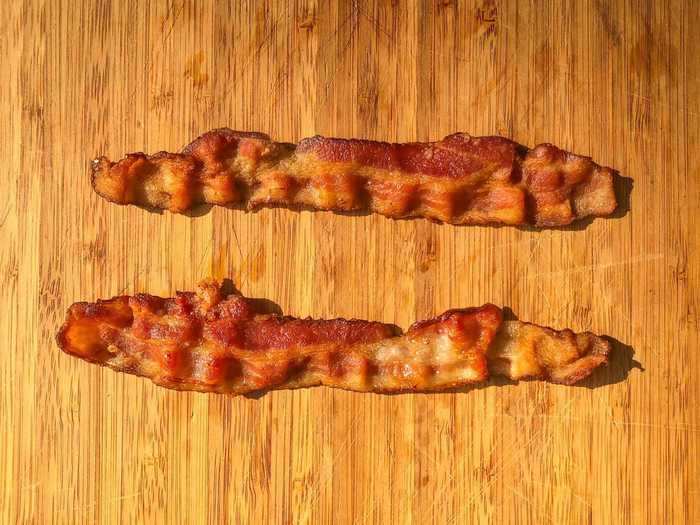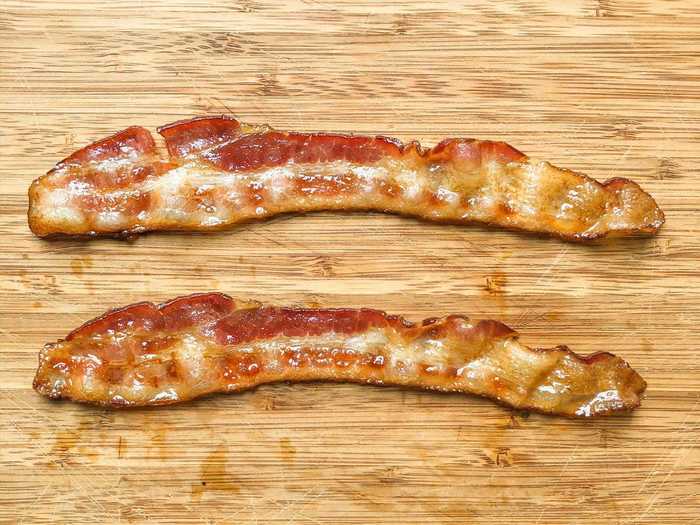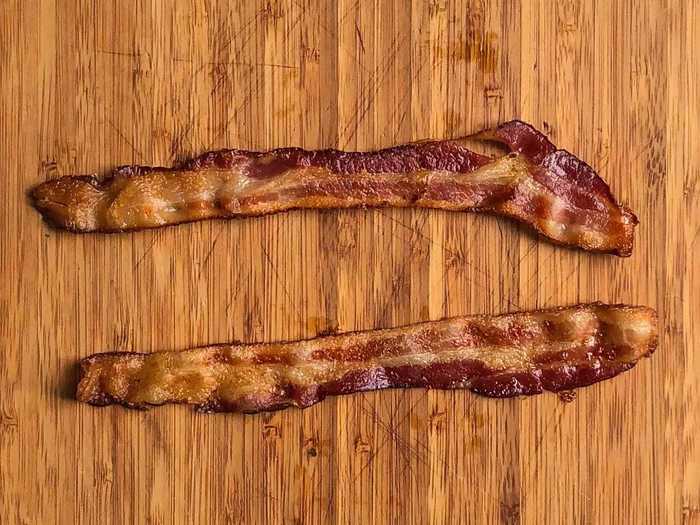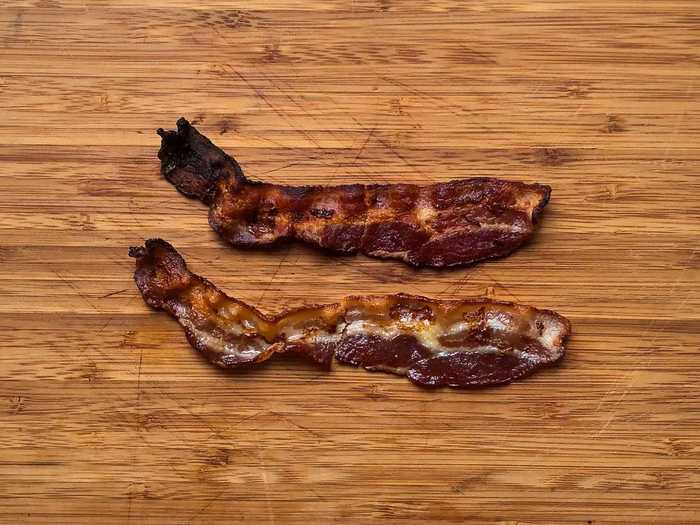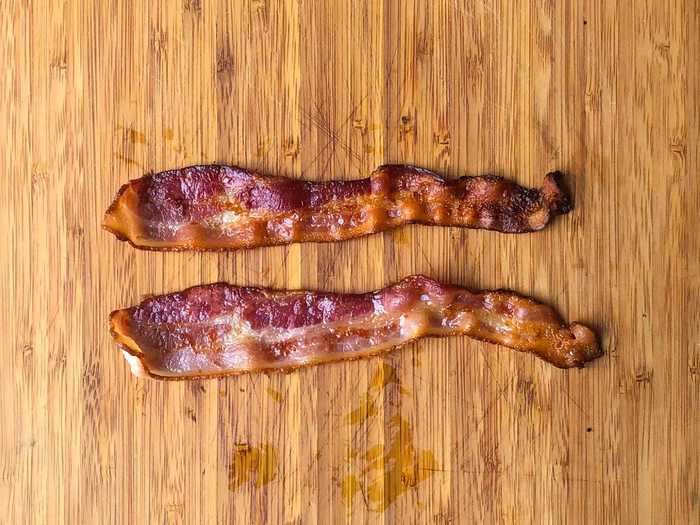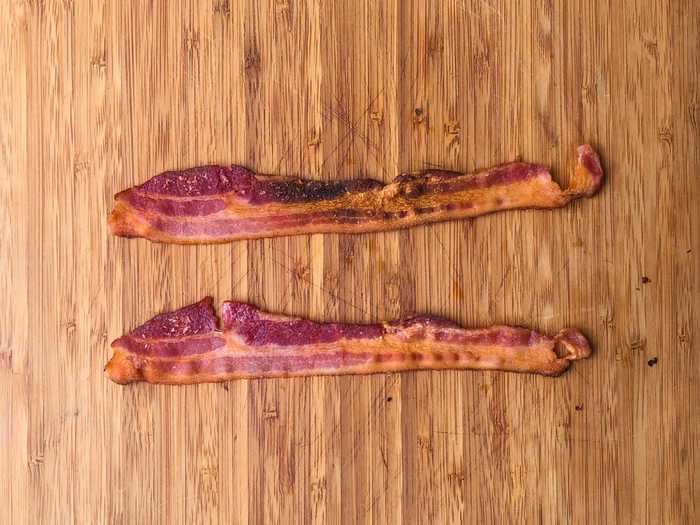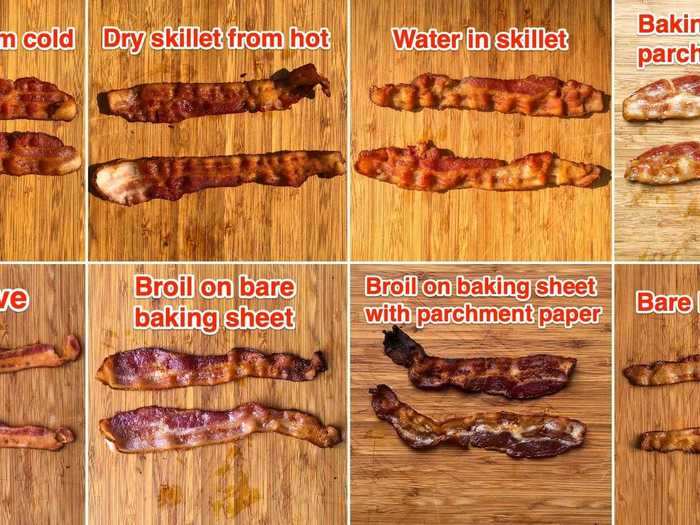Insider
- I made bacon eight different ways to see which method yielded the best breakfast side.
- I compared methods by looking at how they affected the cook time, consistency, and texture of the meat.
- Starting the bacon in a cold, dry skillet made for consistently cooked strips while starting in a preheated skillet made for half-rubbery, half-burnt strips.
- I was surprised by how well the batch I made in the microwave turned out.
After spending weeks finding the best ways to cook scrambled eggs, hard-boiled eggs, and pancakes, I thought it was only right that I try making the perfect breakfast side next: bacon.
Some people prefer their bacon chewy while others opt for crunchy. There's also greasy versus dry, and ribboned versus flat. Knowing that the possibilities are nearly endless, I scoured the internet to come up with a list of eight different ways to cook the popular breakfast meat.
Using the same brand of uncured, center-cut, smokehouse bacon, I changed up variables like my heat source and cooking surface to see how they affected each batch. I made two strips per batch so that I could pay attention to consistency as well.
Starting the bacon in a cold, dry skillet left me with evenly cooked strips.
Bacon cooked in a dry skillet from cold.
Rachel Askinasi/Insider
Putting bacon into the pan before turning on the heat kept grease from splattering all over my stovetop. But I ended up with a lot of grease in my pan compared to some of the other cooking methods I tried — those left less grease in the pan, but a more moist piece of bacon.
This method yielded evenly cooked bacon after around seven minutes, even though the strips weren't the best texture.
This batch was more dry, crispy, and brittle than it was meaty and crunchy. Rather than breaking apart into large bits, the bacon crumbled with each bite and fell apart instantly. While it had a melt-in-your-mouth effect, I don't think it would satisfy someone who loves crunchy bacon.
Conversely, starting bacon in a hot pan made for an uneven cook.
Bacon cooked in a preheated, dry skillet.
Rachel Askinsi/Insider
While this batch took less time to cook than the one I started in a cold pan — this version took around four minutes — each piece cooked unevenly. The more narrow end finished cooking before the wider end, and the edge around the wider end curled up, which left me with mostly burnt, partially rubbery pieces of bacon.
While the middle of each piece was slightly chewy and crunchy, the thinner ends were brittle.
The grease from the bacon had also splattered way beyond the bounds of my stovetop.
Covering the raw bacon with water removed some of its flavor.
Bacon cooked in water using a skillet from cold.
Rachel Askinasi/Insider
I started this batch covered with water in a cold skillet. This method took around 10 minutes to fully cook the bacon.
While the flavor was slightly more muted than it was after using the other cooking methods, the texture of the bacon was impressive. The meat was nice and tender while the fat was a little crunchy.
Some testimonials of this method said it prevented grease splattering, but I didn't find that to be the case here.
Baking the meat in the oven took longer than cooking it on the stove, and using parchment paper kept the strips moist.
Bacon cooked in the oven on a baking sheet lined with parchment paper.
Rachel Askinasi/Insider
Setting my oven to around 300 degrees, I baked this batch on a baking sheet set on the middle rack. It took more than 10 minutes to cook, and didn't shrink up nearly as much as the pieces in the skillet did.
The parchment paper held the bacon grease close to the meat, which left me with puddles of melted fat — this bacon required a lot of draining after removing it from the oven. On the plus side, the bacon wasn't dry at all and the texture was consistently meaty.
If you're willing to wait 15 minutes for your bacon, this method is worth it.
Making the bacon in the oven without parchment paper seemed to help it cook more quickly, but it also left me with drier strips.
Bacon cooked in the oven on a bare baking sheet.
Rachel Askinasi/Insider
Generally, I found that in the oven, the meat cooked faster than the fat did. While the larger ends of the bacon in this batch were meaty and tender, the smaller ends were underdone and rubbery, and some parts in the middle were crumbly.
This method yielded an uneven cook, but on the whole the parts that were meaty were really good.
Using a broiler and parchment paper resulted in shrunken bacon strips that cooked unevenly.
Bacon made under the broiler on a parchment-lined baking sheet.
Rachel Askinasi/Insider
Before making an entire batch of bacon under your broiler, I would recommend testing a couple of strips first.
While this oven method did cook the bacon more quickly than using the regular baking flame — it took around four minutes — I found that the heat given off by my particular broiler wasn't even; the piece towards the back of the oven burned quickly while the piece near the front was chewy.
The parchment paper had the same effect here as it did in the previous method: It kept the strips moist. Though I'd recommend keeping a close eye on your parchment paper — mine nearly caught on fire.
Broiling bacon without parchment paper made for chewier strips.
Bacon made under the broiler on a bare baking sheet.
Rachel Askinasi/Insider
While the back piece still cooked more quickly than the one at the front, it didn't burn as much as the batch I made with parchment paper did.
There was a lot of grease left on the pan and pooled in the grooves of the bacon strips, which curled up at both ends.
While the meaty parts of this batch of bacon were tender and flavorful, the parts that burned slightly were crumbly and brittle. Still, the bacon didn't cook evenly using this method, going from burnt at one end to rubbery and underdone on the other.
Cooking bacon in the microwave gave me the most evenly cooked batch of the day.
Bacon cooked in the microwave.
Rachel Askinasi/Insider
It may seem less conventional, but this method worked surprisingly well.
I put two strips between two pieces of paper towel and cooked them on high for two minutes (the rule of thumb here is one minute per piece of bacon). By the time the timer went off, both pieces of paper towel were soaked through with bacon grease, but the meat was done well and had a crunchy bite.
This method also yielded the flattest strips of bacon — they didn't ribbon or curl up at all — which would be great for a sandwich.
Overall, most of these methods yield great bacon. Deciding on a favorite depends on how you like the texture and how much time you have to let it cook.
Coloring and texture differ based on the cooking method you use.
Rachel Askinasi/Insider
The differences between cooking methods mostly showed themselves in the consistency of the bacon strips.
Overall, I was pleasantly surprised by the microwave method and the technique of starting the bacon in a cold, dry skillet. And though I would recommend broiling for the best meat texture, it requires some trial and error and keeping a close eye on your bacon.
If you decide to go the hot or water-filled skillet route, beware of the grease splattering. That stuff gets hot and you can bet it will reach your arm even on the other end of those super-long kitchen tongs you're using. Don't say my burned hand and I didn't warn you.

